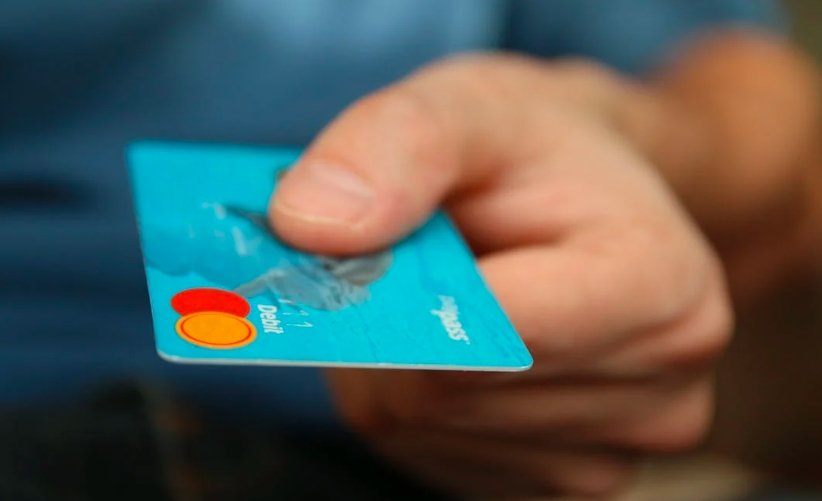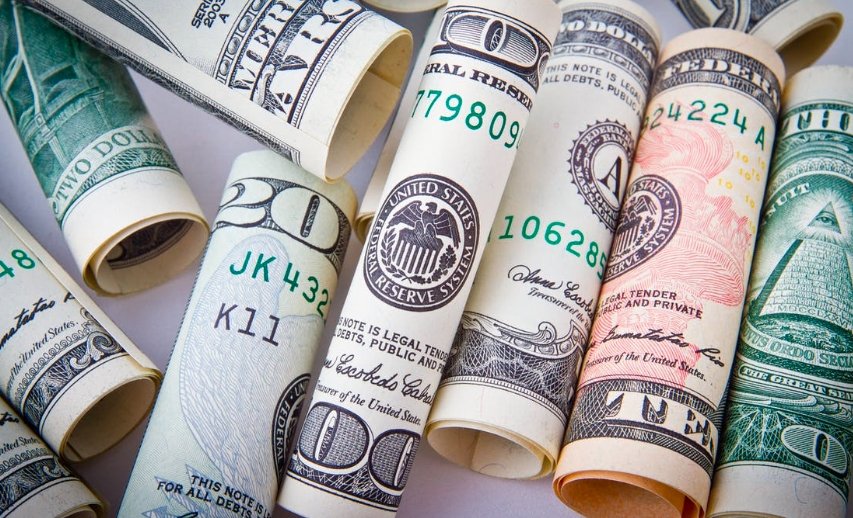For decades, credit card debt has been a major concern for many Americans. Every year, millions of Americans struggle with debt accrued from credit cards, leading to financial strain and stress. Credit card debt has been a major source of financial hardship for many, with total credit card debt in the United States reaching its peak of $1 trillion in the summer of 2008.
However, in recent years, there has been a sharp decline in credit card debt around the U.S. with total credit card debt dropping to $865 billion by the end of 2019. This is a significant reduction in debt, and is a positive sign for the economy as it can help to reduce the risk of financial distress among households. Moreover, the decrease in credit card debt can help to increase consumer spending and investment, which can contribute to economic growth. The sharp decline in credit card debt is an encouraging sign and is a sign of an improving economy in the U.S.
Factors Contributing to the Sharp Decline in Credit Card Debt
Economic conditions and changes in consumer behavior
The recent economic slowdown and the resulting job losses have had a major impact on consumer spending and credit card debt. Consumers are more conscious of their spending and are opting to pay off their credit card balances rather than incur more debt. This shift in consumer behavior has resulted in a sharp decline in credit card debt.

Additionally, the introduction of technology-based payment options such as mobile and digital payments have made it easier for consumers to pay off their debt. This has also contributed to the decrease in credit card debt.
The impact of the COVID-19 pandemic on credit card debt
The COVID-19 pandemic has had a significant impact on credit card debt. As the pandemic has resulted in widespread job losses, many consumers are finding it difficult to pay off their credit card debt.
Furthermore, the government-mandated lockdowns and restrictions placed on businesses have resulted in a decrease in consumer spending, which has further impacted credit card debt levels.
Government stimulus programs and relief efforts
In order to help consumers cope with the financial impacts of the pandemic, the government has implemented several stimulus programs, such as the Coronavirus Aid, Relief, and Economic Security (CARES) Act.
These programs have provided financial relief to consumers, helping them pay off their credit card debt. Additionally, some lenders have also implemented their own relief programs, such as interest and payment deferment, to help consumers manage their debt.
These government stimulus programs and relief efforts have had a positive impact on credit card debt levels, leading to the sharp decline in credit card debt.
Analysis of Credit Card Debt Trends in Different States
Credit card debt is a growing concern in the United States, and the trends are showing significant differences from one state to another. Understanding the credit card debt trends in different states is crucial to formulating effective financial policies and programs. This analysis will present a comparison of credit card debt trends in various states and possible reasons behind the variation in these trends.
Comparison of Credit Card Debt Trends across Different States:
Credit card debt trends vary widely across the United States, with some states experiencing higher rates of debt than others. According to recent data, Alaska has the highest average credit card debt in the country, with an average of $10,685 per person. Other states with high average credit card debt include Virginia ($8,388), Texas ($7,692), and New Mexico ($7,623). In contrast, North Dakota has the lowest average credit card debt in the country, with an average of $4,687 per person. Other states with low average credit card debt include South Dakota ($5,364), Iowa ($5,507), and Maine ($5,596).
Possible Reasons for the Variation in Credit Card Debt Trends:
There are several factors that can contribute to the variation in credit card debt trends in different states. Firstly, the cost of living is a significant factor. States with high costs of living, such as Alaska, Virginia, and Texas, may have higher average credit card debt due to the increased expenses associated with day-to-day life. Secondly, differences in income levels can also be a contributing factor. People in higher-income states may feel more comfortable taking on higher levels of debt, while those in lower-income states may be more cautious about borrowing money.
Additionally, cultural attitudes towards debt and spending may differ from one state to another. States with a more consumerist culture may have a higher prevalence of credit card debt compared to states where saving and frugality are more valued. Finally, access to credit may also contribute to the variation in credit card debt trends. States with a higher availability of credit may see higher levels of credit card debt as a result.
Impact of the Sharp Decline in Credit Card Debt
The sharp decline in credit card debt has generally had positive effects on individual credit scores and financial stability. With less debt, individuals can have a better debt-to-income ratio and can handle their finances more effectively. The decrease in credit card debt can also lead to a boost in credit scores, which can earn them better interest rates when taking loans in the future. This can help them save money and improve their financial stability in the long run. Individuals also have more disposable income to spend as they desire, leading to potential increases in consumer spending and further stimulating economic growth.
However, the decrease in credit card debt can also have potential negative effects on the credit card industry and the economy as a whole. Credit card companies can take a hit as the decrease in debt leads to less interest and fees being collected, which can lead to decreased profitability. This can have a significant impact on the credit card industry, with some companies potentially struggling to stay afloat. The decrease in consumer spending can also potentially affect economic growth.
It is important to note that while the decline in credit card debt can have some short-term negative impacts, it can overall have long-term positive effects on the economy. The decrease in debt can lead to more consumer spending and a healthier economic environment. It can also lead to individuals being able to save more money and invest it into the economy in other ways. Overall, the sharp decline in credit card debt has a complex impact on both individuals and the economy as a whole.
While the decrease in credit card debt has generally been a positive occurrence, it is important for individuals to remember that having some amount of debt can actually be beneficial in building credit. It is important to use credit cards responsibly and pay off debts in a timely manner to ensure a healthy financial portfolio. Additionally, a decline in credit card debt does not necessarily mean that individuals are debt-free, as there are other forms of debt such as student loans and mortgages that can impact their overall financial stability.
Tips for Managing Credit Card Debt
Managing credit card debt can be a daunting task for many people. However, it is crucial to have a solid plan in place to avoid getting into excess credit card debt. Here are some tips on managing credit card debt effectively:
Strategies for reducing credit card debt:
1. Create a budget: The first step to managing credit card debt is to create a realistic budget. Start by analyzing your monthly income and your expenses. List all your bills and payments, including rent/mortgage, utilities, groceries, transportation, and any other recurring expenses. Make sure to include your credit card payments in this budget and aim to pay more than the minimum monthly payment.
2. Pay off high-interest cards first: If you have multiple credit cards, prioritize paying off the ones with the highest interest rates first. This strategy will save you money in the long run since high-interest rates can accumulate quickly.
3. Consider balance transfers: If you have a credit card with a high-interest rate, consider transferring the balance to a card with a lower interest rate. This strategy could save you money on interest payments and help you pay off your debt faster.

Importance of responsible credit card usage and making timely payments:
Responsible credit card usage is essential to managing credit card debt effectively. Here are some ideas to consider:
1. Only charge what you can afford: Avoid purchasing items you cannot afford with your credit card. If you cannot pay off the balance in full at the end of the month, do not buy it.
2. Make timely payments: Making timely payments is crucial to managing credit card debt. Late payments can result in late fees and negatively impact your credit score.
3. Monitor your credit card usage: Keep track of your spending to ensure you are staying within your budget and not overspending on your credit card.
Financial planning advice to avoid accruing excessive credit card debt:
1. Set financial goals: Start by setting clear financial goals. Consider how much you want to save and pay off, and create a plan to achieve these goals.
2. Limit your credit card usage: Avoid using your credit cards for unnecessary purchases or for items you cannot afford. Only use your credit card for emergency expenses or when necessary.
3. Establish an emergency fund: Creating an emergency fund is important in managing credit card debt. Having cash on hand could prevent you from reaching for your credit card in an emergency.
Conclusion
The sharp decline in credit card debt around the U.S. is a testament to the importance of financial education and the emphasis on personal responsibility when it comes to managing finances. With more Americans taking a proactive approach to budgeting and debt management, the trend of reducing credit card debt is likely to continue in the future. This shift in mindset and financial habits is a positive sign for the overall economy, as it can lead to increased savings and investment, which can lead to more economic activity in the long run. Additionally, the reduction in credit card debt can lead to improved credit scores for many individuals, which can open up access to more favorable loan terms and greater financial opportunities. All in all, the sharp decline in credit card debt around the U.S. is a positive development that should be celebrated and encouraged moving forward.
FAQs
1. Why has credit card debt seen a sharp decline in recent years?
There are several factors contributing to the decline in credit card debt, including a greater focus on financial responsibility and education, tighter lending standards, and the impact of the COVID-19 pandemic on consumer spending habits.
2. Is a decline in credit card debt a positive or negative trend?
From a personal finance perspective, a decline in credit card debt is typically seen as a positive trend as it indicates that consumers are managing their finances more responsibly. However, from a macroeconomic perspective, a decline in consumer spending can have a negative impact on overall economic growth.
3. How has the COVID-19 pandemic impacted credit card debt?
The pandemic has caused many consumers to cut back on discretionary spending, resulting in reduced credit card use. Additionally, economic uncertainty and job loss have made it more difficult for some consumers to make credit card payments.
4. Is it a good idea to pay off credit card debt during a decline?
It’s always a good idea to pay off credit card debt, regardless of the economic environment. Paying off debt reduces overall interest costs and can improve your credit score.
5. How can consumers reduce their credit card debt?
Consumers can reduce their credit card debt by creating a budget and sticking to it, prioritizing high-interest debt, and exploring debt consolidation or balance transfer options.
6. Can a decline in credit card debt impact credit scores?
Paying off credit card debt can positively impact credit scores, as it demonstrates responsible financial management and reduces overall credit utilization.
7. Does a decline in credit card debt impact credit card companies?
A decline in credit card debt can impact credit card companies by reducing their overall revenue from interest charges. However, it can also lower their risk of default and improve their bottom line in the long term.
8. Are there any risks associated with a decline in credit card debt?
A decline in credit card debt can lead to reduced consumer spending and slower economic growth, which can have negative impacts on job creation and business profits.
9. How long will the decline in credit card debt last?
It’s difficult to predict the duration of the decline in credit card debt, as it depends on a variety of economic and cultural factors.
10. What should consumers do if they are struggling with credit card debt?
Consumers struggling with credit card debt should first create a budget and explore debt reduction strategies such as balance transfers, debt consolidation, or debt management programs. If they are unable to make payments, they should reach out to their credit card issuers to discuss payment options and potential hardship programs.















